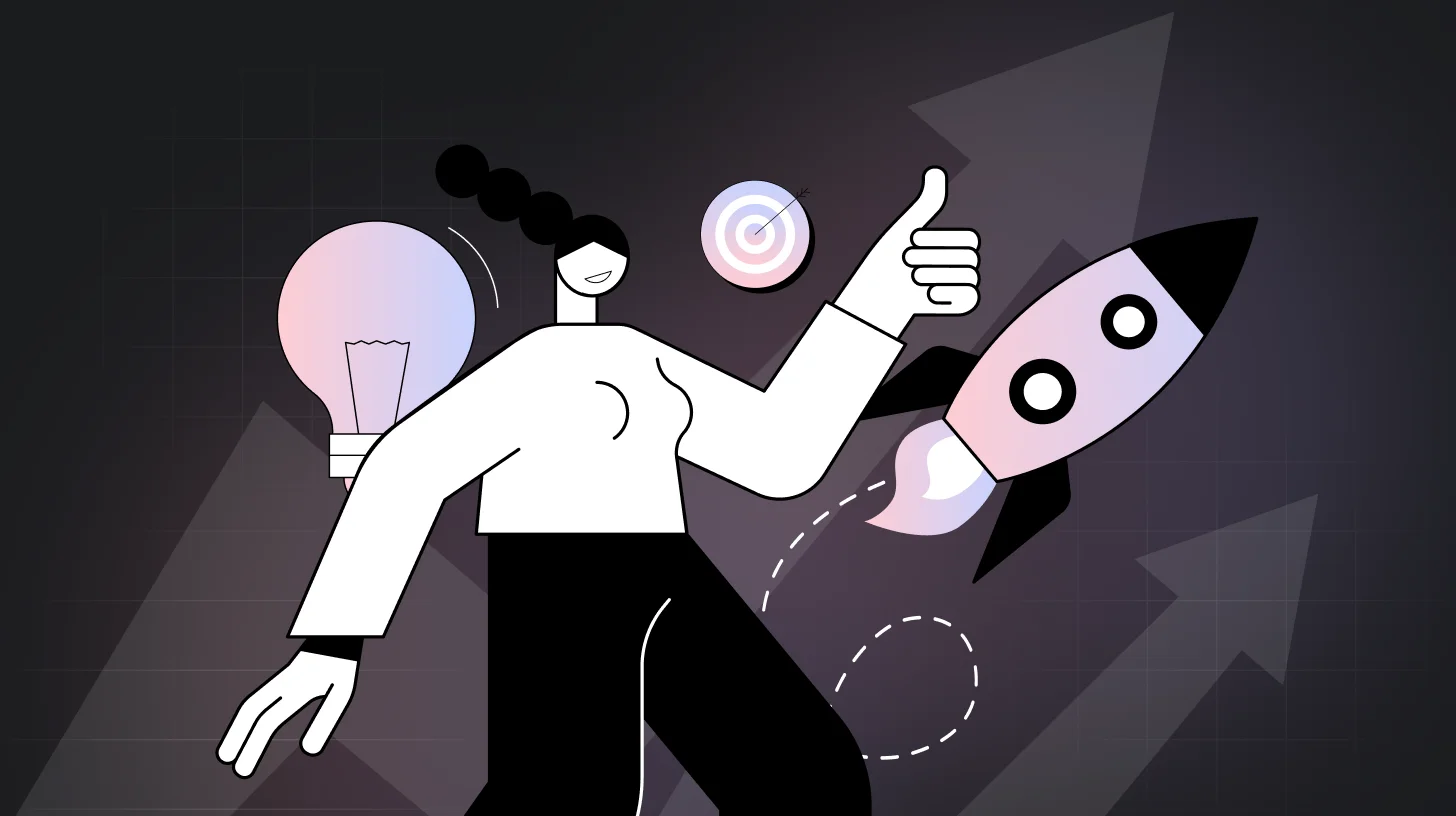 Blog
Blog Building a High-Performing Customer Success Team: Insights from David Ginsburg
Building a High-Performing Customer Success Team: Insights from David GinsburgBuilding a High-Performing Customer Success Team: Insights from David Ginsburg

“When Customer Success comes as an afterthought, it means the company isn’t truly committed to the customer’s success. Instead, they’ve turned Success into a catchall bucket, where CSMs are project managers, relationship builders, training and adoption consultants, support managers, and Sales people.”
That’s how David Ginsburg, Chief Customer Officer at WorkBoard (and former Success leader at companies like Box, Mixpanel, and UserTesting), articulates the flaw of too many companies. They build a product, hire Sales people, and then eventually realize they have all these customers that need help implementing the product and renewing. Then they hire a Customer Success person to manage all post-sale activities and to “own retention.”
“CSMs should be helping customers achieve their desired outcomes,” Ginsburg explains. “But when they’re managing onboarding, training, engagement, renewals, upsells, and product releases—you can end up with a Success team that’s lost sight of that goal. Companies need to get clear on what Customer Success owns as early as possible.”
In this interview, Ginsburg draws from his experiences in companies both early-stage and well-established to share four elements of a successful team structure in Customer Success. He offers ways Success can become embedded in the sales cycle and in commercial conversations—and while you may not be able to copy over every piece of his advice, it’s sure to get you thinking about your current structure.
1. CSMs should be trained to deliver on the “trusted partner” promise
All customers aspire to work with the “trusted partner” CSM. This CSM deeply understands the industry, the product, and the different verticals of customers. They’re able to actively listen and map what they hear as critical to driving outcomes for the customer; And the customer trusts them enough to incorporate the practices and use cases the CSM recommends.
The challenge many Customer Success Teams face is budget constraints. Often, they can’t afford highly experienced CSMs and must instead develop junior staff. That’s why the Trusted Partner Promise becomes a goal achieved through smart hiring and rigorous training, not a default expectation.
How to build a team that delivers the Trusted Partner Promise
Ginsburg offers this advice for bridging the gap:
Hire for potential. Consider hiring people with some consulting experience, or other related fields that practice skills that translate to helping customers achieve their goals. For example, consultants are required to develop the ability to understand what customers are trying to solve.
“In interviews, one of the questions I always ask CSM candidates is what their superpower is,” Ginsburg says. “I want to know what they do that they think is both impactful and natural. And there’s no right answer—but when they index exclusively on the relationship side, it’s not a great sign. A relationship alone isn’t going to help you get through a rough patch, it’s not going to move a customer from red to green. So when a CSM walks in with the mentality that that’s what they can get done, I tend to be skeptical.”
Get clear on the role. “For CSMs to be fully successful in their roles, you need to get super clear on what their role is. How should they spend their time? What are the highest value activities they should focus on? Then, see if you can give the other activities to associate CSMs. Most organizations don’t have ‘associate CSMs’ but I think they should: it trains the associates while freeing up time for the subject matter experts to the more impactful work.”
Train CSMs to develop their expertise. Ginsburg recommends teaching CSMs how to speak at a strategic level not just about the company’s product, but the problems in the overall space. That requires an understanding of the processes and best practices that other companies are implementing. CSMs should work to see patterns in how companies of different sizes and in different industries use the product.
“The term 'trusted advisor' is a buzzword that is thrown around too loosely and too often,” Ginsburg says. “But the intent is solid. If the opinion is earned and valuable, whether or not customers choose to act on their CSM's guidance, they still want to hear it."
Move away from the “project manager CSM” mindset. “As organizations, we need to shift our mindsets from thinking of CSMs as “facilitators” where they’re the ones coordinating all the moving parts and putting the right people in place, but they’re not the ones doing the actual thinking. It’s like ‘when the CSM doesn’t know the answer, they can point the customer in the right direction.’ Eventually, the customer just wants to work directly with the person who’s giving them the answers,” Ginsburg explains. “CSMs need a degree of subject-matter expertise in order to deliver on the “trusted partner” promise (Ginsburg prefers “trusted partner” to “trusted advisor”). Certainly you should bring in SMEs as the depth requires but you must know enough to probe, ask the right questions and begin the problem-solving process. Net, net the “facilitator” analogy does not sufficiently describe the role of the CSM.”
2. Customer Success begins before the sale
In some of the most effective Customer Success teams, CSMs begin building relationships with prospective customers during the sales cycle. While they’re ultimately focused on actually delivering on the customer’s needs, CSMs are brought in during the sales cycle to help the customer feel more comfortable with agreeing to a commitment, and to frequently answer questions.
“We’ve found that customers appreciate speaking with the person they’re going to be working with after the deal is signed,” Ginsburg explains. “It also helps bridge the gap between Sales and Customer Success, since the customer doesn’t have to repeat anything and the CSM is already read-in on what the customer expects.”
3. Customer Success belongs in commercial conversations
“Keeping CSMs 100% focused on the relationship and 0% on sales sounds great in theory. I understand the purity of CSMs not being involved in commercial conversations,” Ginsburg says. “But If you’re doing well by the customer, you’re building trust. Injecting someone the customer may have never met before into the equation can be jarring, and it can be a real challenge from a sales perspective too.”
Which means, whatever your process for renewals, upsells, cross-sells, and expansions, Customer Success should at the very minimum be part of those conversations, strategizing and collaborating with their partner in Sales.
“If you hire a CSM that understands the commercial terms and their impact, that's a strong perspective to have as your company evolves everything from its pricing strategy to its discount strategy to even features and functionality,” Ginsburg says. “And how do you have the voice of the customer in your company without Customer Success understanding some of the key commercial terms involved on why they're a customer?”
4. Renewals are routine, and most expansions should come naturally as well
Ginsburg has led teams where CSMs owned renewals and where there was a separate renewals team (which freed the CSMs to focus more on helping customers achieve their desired outcomes). In either case, he emphasizes that renewals are a non-event when done well.
“If we’re doing it right, there shouldn’t be a sense of flurry and panic surrounding the renewal,’” Ginsburg says. “Renewals should just happen—and a lot of our expansion should be happening organically as well.”
If a company is getting what they want out of a product and they’re using the product to achieve their goals, then expansion will come naturally as the company grows. Conversely, when working with more mature enterprise organizations, it’s common to begin by selling into one team or business unit within a company. When they’re ready to roll the product out to a broader group, that’s when Sales should engage and take the lead.
“CSMs can be great at identifying growth opportunities,” he says. “But selling the product into other business units is not part of their core expectations. When that's an opportunity, we bring in Sales because of the required level of planning and ability to navigate organizational dynamics. The CSM should be focused on customer outcomes, and those types of activities can divert energy away from that core focus.”
Summary: A Strong Customer Success Team Starts with Structure
For companies looking to build or scale a high-performing Customer Success Team, these lessons from David Ginsburg offer a powerful roadmap. Whether you're scaling a mature function or founding a SaaS team from scratch, here’s how to strengthen your Customer Success Strategy:
- Train your CSMs to become trusted partners
Hire for potential, define the role clearly, and help them grow into industry-savvy experts who deliver on the Trusted Partner Promise. - Start Customer Success before the sale
Engage prospects early to align expectations and build rapport that lasts beyond onboarding. - Make Customer Success part of commercial decisions
Don’t isolate them from the business impact. Empower them to shape pricing, expansion, and retention conversations. - Renewals should be stress-free, and expansions should flow naturally
When outcomes are met, growth follows. Keep CSMs focused on those outcomes while Sales handles the larger enterprise motions.

















.svg)